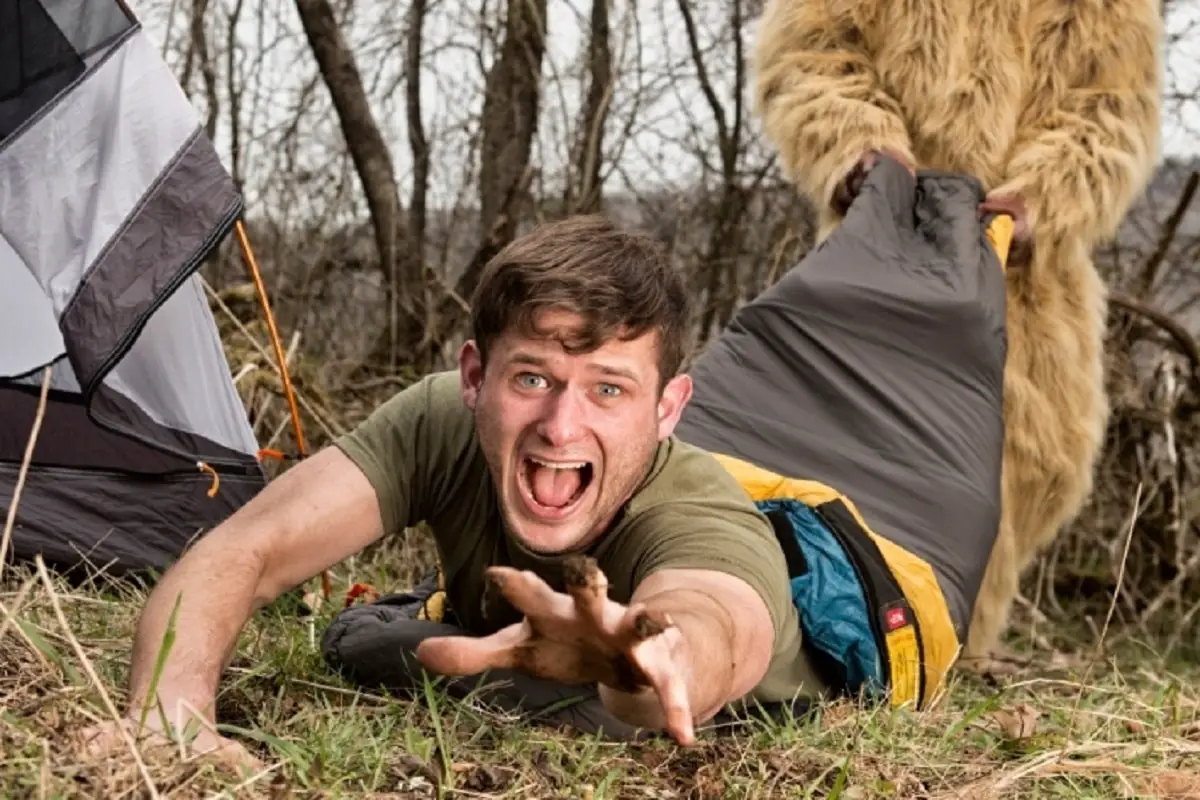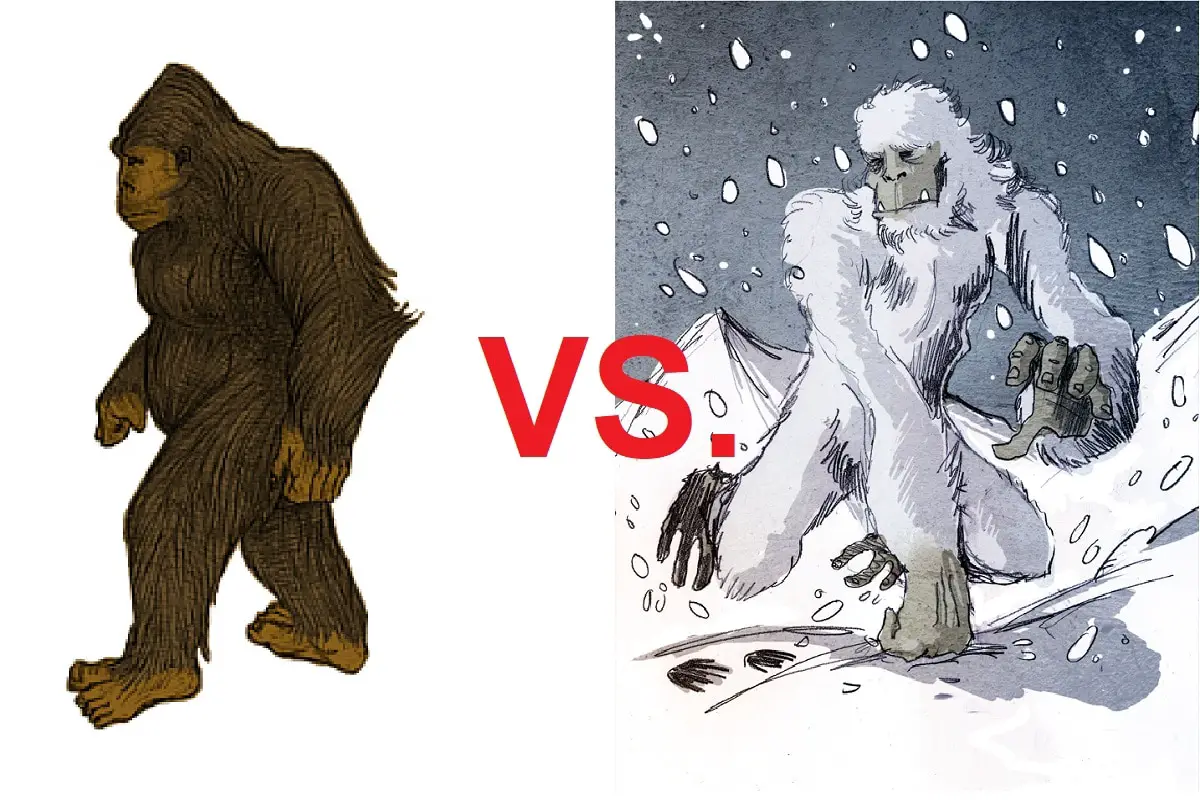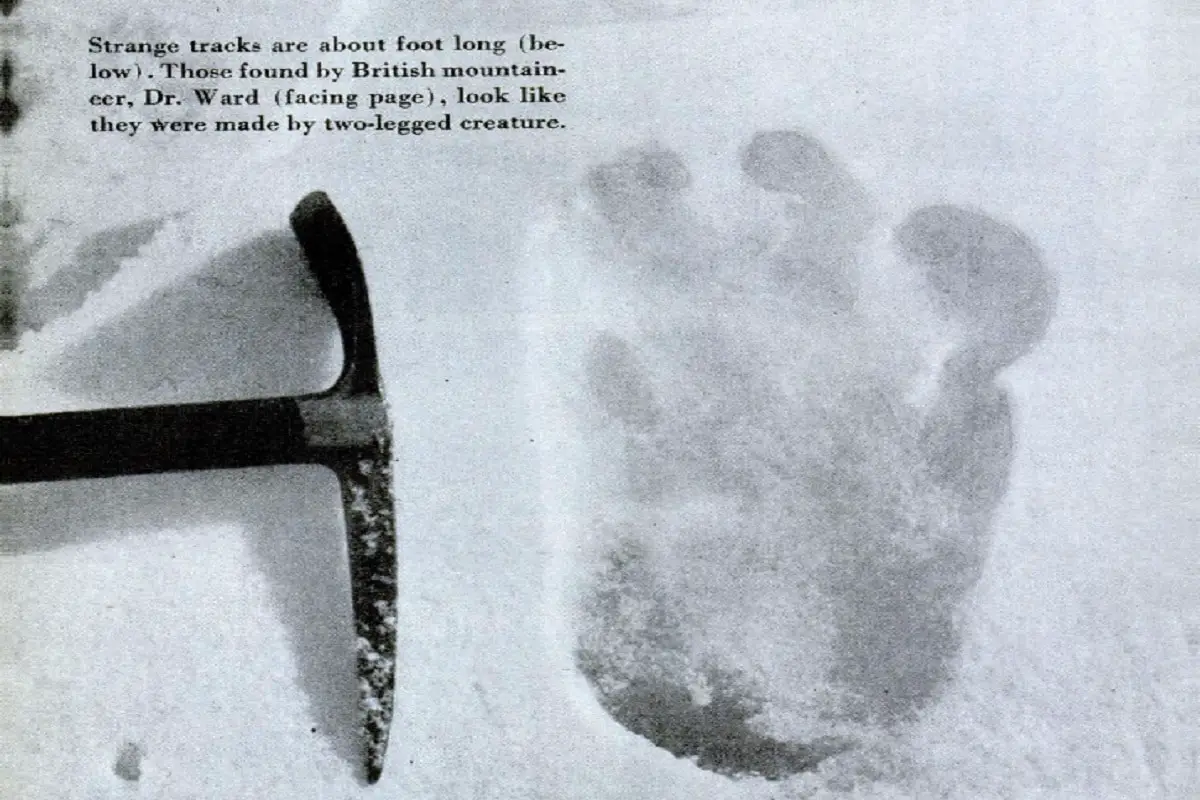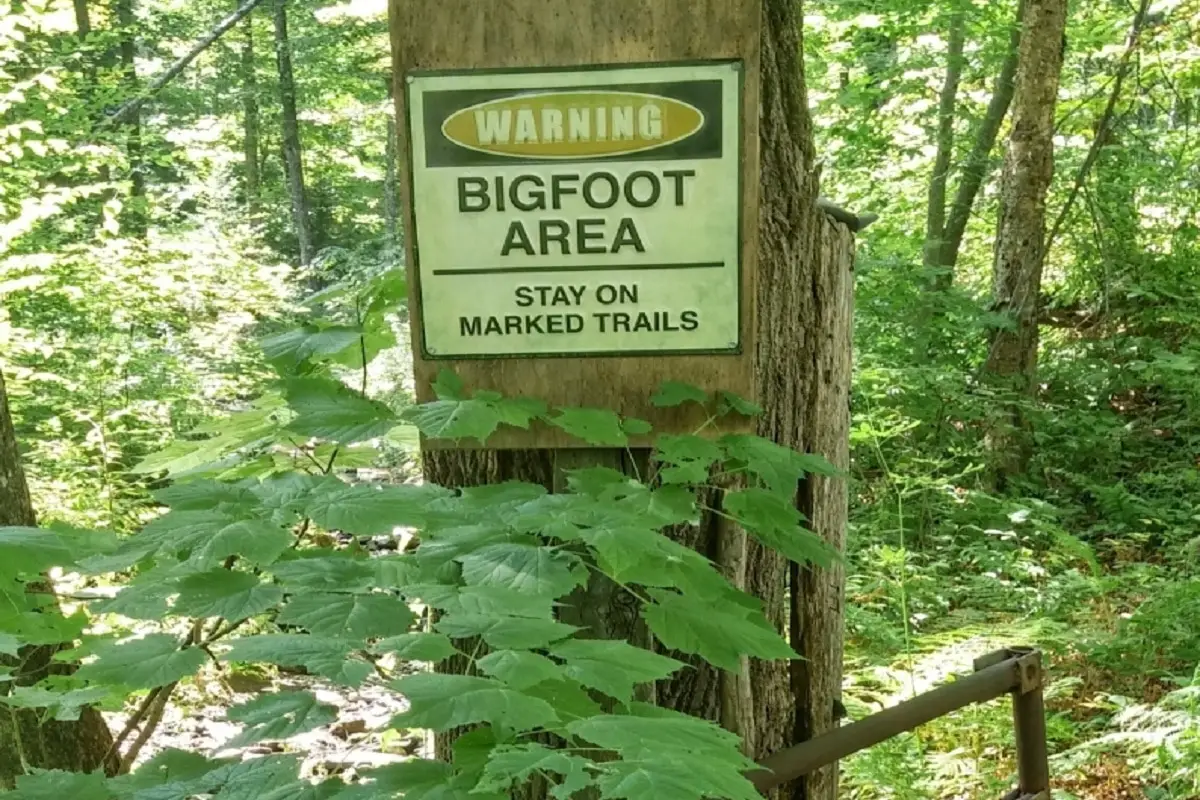One day you are strolling through the woods on a nice hike when all of a sudden you run into Bigfoot. This is a situation some hikers have found themselves in. If you are one of them, what you do next is very important.
A Bigfoot! What Do We Do?
If the bigfoot has not seen you and is relaxed and foraging, or perhaps resting, you might be able to get a snapshot with your phone. If it spots you, it might be best to hightail it out of there. In truth, your every move counts when you come in contact with a Bigfoot.
Don’t Panic
If you come across one and it doesn’t see you, then you do not need to panic. However, if it does then panicking might be a good idea. It could decide to run away or come after you. In any case, you want to get away from the bigfoot as fast as possible. It’s bigger and stronger than you and knows the woods like the back of its hairy hand. While running away, try to hold your cellphone out behind you and get some shots as best you can.
Bigfoot is most likely going to run or lope away because it is a shy creature. But if you are not careful and you provoke it in some way you could be attacked by bigfoot. A strategically clever one might even attempt to ambush you, so be alert at all times.

Bigfoot in Your Campsite
If you are camping and a bigfoot strolls into your campsite, you are in some real trouble. He’s likely hungry and will stick around cleaning out your food stores. Just make sure to keep quiet and maybe he will go away. Turn the shutter sound off on your cellphone before you take a picture.
Bigfoot vs. Yeti

Yeti and Bigfoot are similar, in that they are both related to the great apes, but there are certainly differences between them. First of all, Yeti likes to live in snowy mountainous regions, especially the mountain range of the Himalayas. It also makes its home in ice caves. Yeti is not known to keep any friends or family with it, so if you see one it will likely be alone. Whereas bigfoot is known to keep family and friends nearby.
A Yeti is also perhaps more difficult to track than a bigfoot because their footprints are quickly covered in snow and can easily melt in the sun. Yeti footprints are also commonly mistaken for bear footprints or those from wild mountain dogs.
Yeti Colors
Yeti are colored white, grey, and greyish brown. They have a fleshy color on their face, hands, and feet. Yeti are covered in hair head to toe like bigfoot but also have a slightly larger beard. Like bigfoot, yeti have large feet that help them traverse snow and ice. They also have large hands made for handling prey and grabbing onto rocks.
The Abominable Snowman

The Abominable Snowman is in fact a Yeti. You could call one a Yeti, or an Abominable Snowman, as it is used to being addressed as either by the locals.
Bigfoot vs. Other Monsters
Bigfoot vs. Zombies
Zombies are dead people and they often hang out in groups. These people were turned into zombies by being bitten by other zombies. Zombies are usually slow walkers, like bigfoot, but can run as well. In fact, the runners are a real pain to deal with, so watch out.
Similarities Between Bigfoot and Zombies:
- Both are near a human’s size.
- Both smell bad
- Both make grunting and howling sounds, especially when angry.
Differences Between Bigfoot and Zombies:
- Zombies are dead people, while Bigfoot is very much alive.
- Bigfoot is covered head to toe in hair.
Zombies look different than bigfoot in regards to their skin, faces, and their overall size. Zombies’ skin is usually greenish-brown, mixed with blotches of fleshy colors, and they will often be wearing tattered clothing. They also are covered in sores, cuts, and boils. Zombies smell very bad and regularly make ghoulish sounds. To stop a zombie, you have to kill it, which is sometimes hard to do because it is already dead!
Bigfoot vs. King Kong
King Kong is a giant ape. Bigfoot and King Kong do not share the same territory. They both eat plants and meat, but King Kong has a much larger appetite. King Kong would definitely win in a battle with bigfoot. You will know if King Kong is around, as he’s huge and causes the earth to shake when he walks and runs. Bigfoot is a little bit harder to spot in this regard.
Similarities Between Big Foot and King Kong:
- Both are related to apes.
- Both are covered in hair.
- Both have higher strength than humans.
- Both are shy creatures.
Differences between Big Foot and King Kong:
- King Kong is much, much larger than Bigfoot.
- King Kong has worse anger management issues.
You will have a much easier time getting away from Bigfoot than King Kong. But you shouldn’t push your luck by getting too close to either!
Bigfoot vs. Werewolf
A werewolf is a half-man / half-wolf creature that turns into a wolf at night on a full moon. They kill or turn other people into werewolves by biting them.
Similarities between Werewolves and Bigfoots:
- You will struggle to outrun either a Werewolf or a Bigfoot.
- Both are covered in brown colored hair.
- Both have almost supernatural strength and sharp instincts.
Differences between Werewolves and Bigfoots:
- A Werewolf can run faster and jump higher than Bigfoot.
- Werewolves can only be killed with a silver bullet.
Werewolves like to venture into areas that humans and animals inhabit, such as farms and cities as it gives them ample hunting opportunities. They also take great pleasure out of terrorizing people.
The only way to kill a werewolf is with a silver bullet. You can kill a bigfoot using just about any weapon as long as it causes enough trauma.
A werewolf could actually be living down the street from you; his name is “Dan” and he’s an accountant. A bigfoot would not get away with living in your neighborhood, at least it is not likely. Although they have been known to occasionally cross into semi-populated areas and near roads when traveling.
History of Bigfoot

The “Bigfoot” Name – Where Did It Come From?
The name “Bigfoot” originated from a logging camp in Humbolt, California where a logger found large, 16-inch footprints in the mud nearby. Also, company items and equipment, including, large oil drums had been previously moved without explanation. These led the loggers to start naming the creature “Big Foot” due to the footprints and the unexplained occurrences in the area. They also started to use this term to scare away potential hooligans who would mess with company property.
Native American Names For Bigfoot
Native American tribes have their own names for bigfoot, including:
- Windego
- Boqs
- Yeahoh
- Omah
- Sasquatch
Bigfoot vs. Sasquatch
The name “Sasquatch” is often used in the Pacific Northwest in place of the word “Bigfoot”. This name is derived from the Native American tribe Salish, which means “wild men”. According to some Native American myths, the Sasquatch is actually a very peaceful, supernatural being with great intelligence.
What Does Bigfoot Look Like?
Bigfoot resembles a part ape, part human, beast-like creature that is large in stature and strength. It walks on two legs (bipedal) like humans and has a loping gait. Its fur is brown with a tinge of red that is long and covers its entire body. Its face looks like a mix between humans and gorillas. Bigfoots also have an almost black nose, like a gorilla. Bigfoots make verbal sounds not known to come from recognized animals that resemble growling, howling, and grunting.
How Big Is Bigfoot?
This is an important question as it can help you identify Bigfoot when you are out on your expedition. Bigfoots are large, ape-like animals, that walk on two legs (bipedal). Body dimensions are in the following ranges:
- Anywhere between 6-15 feet in height.
- Weighs 150 to 700 pounds.
- Smells bad, similar to rotting eggs.
- Human-like face, with a dark flat nose and large lips.
- Strong, broad shoulders.
- Long, hairy arms.
- They are dark brown in color and may glow a yellowish or red color at night.
- Their feet are very large: 12-24 inches in length, 3-8 inches wide, and include 5 toes.
Different Types Of Bigfoot
There are actually different types of Bigfoots roaming North America. These include:
Type 1 – The standard, large Sasquatch.
Type 2 – A chimp-like, aggressive Bigfoot, and a bit smaller than Type 1’s.
Type 3 – A more savage-looking Bigfoot that grows very tall (anywhere from 10 – 15 feet).
Type 4 – A type of Bigfoot that lives in the north and northeastern regions of North America. They most resemble a prehistoric-looking man.
Where Do Bigfoots Live?
Bigfoots are known to live all through North America, especially in the forests and mountainous regions. The Pacific Northwest is most well known as a bigfoot country as it is densely wooded and very few people live there, which is perfect for these shy creatures. In fact, this region has a large portion of all known bigfoot sightings. If you wanted to hunt for bigfoot, this would be a prime region to start your search.
Bigfoot Families – Do They Have Them?
Bigfoots are known to be family-oriented. If you ever come across a bigfoot family, make sure it is not actually a human family that likes to dress up for cosplay on the weekends. They might ask you to delete the photos from your phone.
Bigfoot Junior (What’s His Name Again?)
The only way for Bigfoot to survive as a species is to have children. So, there are likely a few Bigfoot juniors around. Perhaps they all have the same name: “Junior”.
Bigfoot’s Son
There are male and female bigfoots (because that’s how the birds and bees work) which means a bigfoot can have a son. If you ever do meet him, you can refer to him as Bigfoot’s son. Everyone will know who you are talking about then.
Bigfoot – Real or Fake?
There is evidence that Bigfoot is real, including grainy videos and photographs, and footprints found frozen in dried mud. However, most zoologists dismiss this evidence outright as hoaxes or hallucinations. Even with the possibility of finding one, they are not easy to spot because they are rare and like to remain hidden from human contact.
But this means in no way should you cancel your Bigfoot expedition. Just don’t set your hopes too high that you will find one. That’s why they call it “bigfoot hunting”, not “bigfoot finding”.
Bigfoot Wars
There may have been bigfoot wars fought over territory at some point, but we just don’t know. Native Americans may have witnessed a few of these skirmishes, but they never kept detailed notes. Let’s just assume that there may have been many bigfoots in North America before those darned Europeans arrived.
But the bigfoot wars (1st, 2nd, ?), which may have bordered on bigfoot apocalypses, must have taken their toll on the population. Maybe that’s why there are just so few survivors left to be found, and those that remain like to avoid attention.
Bigfoot Beard
Bigfoot’s do have beards, as well as a slight mustache that extends on the sides with a gap in the middle. The beard is unkept and slightly long. The mustache will extend down on the wings and be curly, as well as brown in color.
Bigfoot In Spanish
The word “Bigfoot” in Spanish is said as “Pie Grande “.
If you live in California, you may hear this word from time to time as there is a large Spanish-speaking population there.
Bigfoot In French
“Bigfoot” in French is said as “Gros Pied”. If you live in Canada, you may have heard this word. We don’t know if the Bigfoot, or Gros Pied, speaks French. So, yelling “Go away!” at one in French may not work very well.
Best Bigfoot Jokes
Photographing Bigfoot is…
– no small feat.
What would have Bigfoot been called by Native Americans if he had a big nose instead of big feet?
– Schnozzsquatch
Bigfoot is sometimes confused with sasquatch…
– Yeti never complains.
What does Bigfoot do to keep his glutes in shape?
– Sasquats
How does Bigfoot know what time it is?
– He looks at his sasquatch.
Why is is that you only see bigfoot in America
– Because you see bigmeters everywhere else
What do you get when bigfoot stomps on your garden?
– Squash
A barber, a hairdresser, and bigfoot walk into a bar…
– You know what…I’m gonna shave this joke for another time.
I’ve always wondered if it was easy to catch Bigfoot
– I was relieved when my doctor told me it wasn’t a disease.
Staying Safe is Key When You Run Into Bigfoot
Remember, always do your best to stay safe when you go out into the woods to camp or hike. Try and keep a lookout for wildlife that could harm you, such as snakes, spiders, and even a bigfoot. If you run into a bigfoot, your safety is more important than a good close-up picture to show your friends or coworkers. If you can’t get back home, then what is the point.
Images:
By Gardner Soule – The World’s Most Mysterious Footprints. Popular Science. December 1952., Public Domain, https://commons.wikimedia.org/w/index.php?curid=57939851
